Aatif Ahmad Mehjoor comments on the economic strength of Kashmir and the questions related to the issue. (Courtesy: Daily Greater Kashmir dt. Sep. 10th, 2008)
Can Kashmir survive as an independent territory? The recent economic blockade against the Kashmir valley by extremists in Jammu has brought into sharp focus the economic facets of the Kashmir problem. Even separatist political leaders, whose rhetoric was until now exclusively concerned with political rights, have started to express their views about the need to achieve economic self-sufficiency. By focusing on the economic realities underlying the Kashmir problem, the people of Kashmir will be able to better understand the nature of the problem. They will be able to better understand how their so-called leaders have behaved in the last six decades. The economic reality of Kashmir is that it is heavily dependent on India, not only for the vast majority of products consumed within Kashmir but also as a source of funding for the State Government. One only has to look at the J&K State Government’s budget and the sources of funds to see how dependent Kashmiris are on the Indian taxpayer’s largesse. For example, in the 2007-2008 budget, the total budgeted expenditure of the State Government was Rs. 16,267 crores ($3.6 billion). Realised expenditure (i.e. the amount actually spent by the Government) was Rs. 17,354 crores ($3.85 billion). This was not the first time that the Government exceeded the budget. Of the total of Rs. 17,354 crores spent by the government, more than 55% came from the Indian government – the vast majority in the form of grants. How was all this money spent by the State Government? Actual expenditure on interest payments amounted to Rs. 2,031 crores (i.e. 11.7% of the total budget). The budgeted expenditure on interest (i.e. what the Government thought it would be paying) was only Rs. 1,251 crores (i.e. 7.7% of total budgeted expenditure). Despite recommendations from experts to reduce the amount of debt that is being serviced, the State continues to suffer from an increasing debt burden. Interest payments continue to increase. Expenditure on salaries and pensions amounted to Rs. 5,527 crores (i.e. nearly 32% of the total expenditure). Thus, 32% of what our State Government spends goes to provide wages and pensions for government employees and ex-employees. An equally monstrous chunk of the State budget is spent on electricity. The State purchases electricity at market prices but recovers only a small part of the purchase cost because the people of the State refuse to pay for the electricity they consume. It is important to compare these figures with the total economic output of the State. In 2007-2008 the total State Gross Domestic Product (i.e. the total size of the State economy) was Rs. 32,172 crores ($7.15 billion). This means that government spending amounts to nearly 54% of the State’s economy. It also means that the Indian taxpayer is directly responsible for financing nearly 30% of the State’s economy. The figure may be higher because a significant portion of the private sector in Kashmir (such as small provisions stores, shopkeepers, lawyers dependent on ‘service matters’ etc) are dependent upon spending by government employees and such spending itself gives rise to a significant portion of the taxes collected by the State Government. What would happen if Central Government funding disappeared? The State’s economy would shrink by at least 30%, resulting in massive unemployment, chaos and even starvation. During the Asian financial crisis of 1997-1999, the worst suffering country was Indonesia but even its economy only shrank by 12%. Yet, the result was chaos and suffering on a grand scale. If Central funding were to be withheld, the State Government would be unable to finance the monumental wastage of electricity by the population, who would find themselves without electricity, and there would be no salaries to pay to many government employees – from teachers to daily wagers. The State Government would also be unable to raise any funds by borrowing. It can borrow only because the guarantee of the Indian Government stands behind it to support its creditworthiness. Were such a guarantee to be withdrawn, no one would lend money to a State Government whose spending was out of control. None of the people who have written about economic self-sufficiency have thought about these issues. The problem is not the absence of private sector development in Kashmir. The problem is the excessive dependence of the people on government jobs (which leads to enormous spending on salaries and pensions), the theft of electricity (someone has to pay for it after all) and a sense of free or subsidised entitlement to various services (such as electricity, gas, oil or essential commodities). This problem cannot be blamed on India. It is, after all, Kashmiri politicians who vote on the budget in the legislative assembly. It is Kashmiris who take government jobs because private sector work is considered to be beneath their dignity. It is Kashmiris who use electricity and then do not pay for the actual amount of electricity used. If the State Government purchases electricity for Rs. 1,000 crores, then it has to realise this amount from consumers. If consumers only pay Rs. 400 crores, then someone has to foot the deficit of Rs 600 crores! The opening of the Jehlum Valley Road will not get rid of this dependence. It may boost exports by providing an easier outlet to Pakistan. It may be that our fruit growers find better markets in Pakistan where our products fetch better prices. However, it will not change the fact that the vast majority of the people in Kashmir continue to be employed by the State Government. Cross-LOC trade will do little to alleviate the State’s debt burden or put curbs on the Government’s out-of-control expenditure. It hardly needs stating that much of the money spent by the State Government is embezzled by corrupt officials. Together with legitimate salaries and pensions, this money is spent on the consumption of products that must be imported from outside. There is little incentive to engage in the production of these items within the State. Why set up a sheep farm to cater to the high demand for mutton when one can earn an easy living as a daily wager and get to enjoy Rajasthani mutton for a free wage? Even rice has to be imported from outside the State. If the money is not spent on buying products from outside, it is invested in buying land or building “shopping complexes”. It is not invested in projects that generate stable employment and that increase the production of goods for export or as substitutes for imports. The successful running of a political movement requires not only courage and energy, but also wisdom and a vision on the part of those leading the movement. This vision must be all-encompassing. It must provide for all aspects of a people’s life: political, social, and economic. It must not be a motley collection of slogans and chants that are repeated at demonstrations and on interviews. The vision’s rational basis must be articulated by intellectuals and its emotional appeal must be given expression by poets.Take, for example, the movement for Pakistan. At its vanguard were towering intellectuals of the time with charismatic personalities. The movement was not only joined by landlords and other men of wealth, but was primarily led by intellectuals who had studied abroad and who had excelled in their respective fields. Leadership was not unilaterally assumed by any single person. Instead, a natural leader emerged (Jinnah) and everyone approached him and invited him to take charge of the struggle. The movement found poetic expression under the pen of Iqbal and other poets of the Urdu language, who produced masterpieces whilst capturing the spirit of the movement. Now compare this with Kashmir. The ‘movement’ has been made into a commercial business. A number of the so-called leaders have misappropriated vast amounts of money meant for orphans and martyrs. They have educated their children in expensive private schools in England and America, enriched themselves from the funds generously donated by well-wishers for the welfare of Kashmiris, and have monopolised the political space in Kashmir. They have also turned their politico-business outfits into dynastic enterprises, devolving ownership and control to their male children. It is necessary for the truth to come out and for those profiting from Kashmir, whilst everyone suffers, to be exposed. Writing only tributes to the protests and condemnations of India will not achieve anything. The truth is already known to the people of Kashmir. They have to confront it one day.














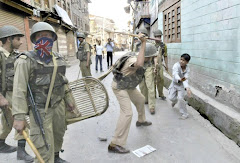





















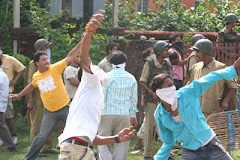

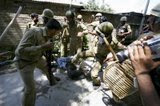




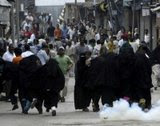







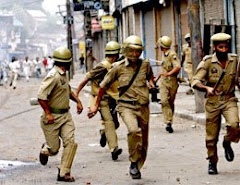
Sustainability and Self-Sustained Growth
ReplyDeleteProf Nisar Ali comments on Economic and Financial Fundamentals of J&K Economy (Courtesy: Daily Greater Kashmir dt. Oct. 13th, 2008)
Self-reliance and self-sustained growth are fundamental objectives of nations and societies in their development process, therefore, the investment planning is made to raise the marginal rate of savings to the level where the physical goods-production mechanism and employment relationship is effectively established to induce capacity to invest, given the constraints, so as to raise social marginal productivity to take the economy along self-sustained growth path. In case of Jammu and Kashmir economy, the physical goods sector could broadly be divided into a “physical goods producing sector” and “services sector” which produces no physical output. The former is confined to farm and bovine sector, horticulture, forestry, traditional craft sector, small scale industry and loss making medium scale industry comprising 20 public sector undertakings which include service sector as well. The extent to which Jammu and Kashmir State is able to sustain itself and achieve reasonable self-sustained growth can be analysed in terms of its productive and non-productive stock and flow of capital. Before an interesting mechanism capital as stock and capital as flow is understood, I would like to make the concepts clear. ‘Capital’ is most scarcest and important factor of production, therefore, most important factor of growth. In terms of money we call it savings that is, unconsumed residual portion of current income and is treated as ‘flow’. In physical terms capital is defined in two parts, namely ‘stock of fixed capital’ and ‘stock of inventory ’as against flow. It is this accumulated aggregate capital stock which is referred to as ‘national wealth’ and is divided into productive national wealth (productive capital stock) and non-productive national wealth. The former is created by investment activity for definite purpose of directly increasing physical and service outputs, e.g., infrastructure indispensable for increasing physical output. Naturally endowed land, mineral deposits, water resources are not included in this as they are not created by investment activity. Once investments are made for their exploitation, the amount of physical investments is included in the category of productive capital stock. From the Development Economics viewpoint , the availability of physical material inputs and capital goods, on the one hand, and ‘investment environment’(better returns on invested capital much above the rate of interest, profits) on the other, are most important factors underlying the process of growth, that is, creation of physical output(production), generation of employment and incomes. Now let us look at physical stock of capital (accumulation process) and labour as resource and critical input underlying growth process.
Labour and Capital Resources in Jammu and Kashmir
We include both skilled and unskilled workers in the category of labour and rely on data from various official and published sources with some statistical sense of observations. According to Census 2001, the total workers in the state are 63.9 lakhs, that is, 37 .01 per cent of the total population as against 30.37 per cent in 1981 which means the labour force is growing at an annual rate of 1.09 per cent corresponding the population growth of 2.68 per cent per annum. Out of the existing labour force 28 per cent are engaged in agricultural pursuits. If we look at earlier Census estimates, the labour force engaged in agricultural pursuits in 1961 was 84.8 per cent and sharply came down to 61.1 per cent in 1971.Thus, there is a persistent and sharp decline in workers engaged in farm sector activity. As a result of economic growth the proportion the workers engaged in agricultural activity decrease while the said proportion in industrial sector and other sectors of the economy correspondingly increase. But looking at the Jammu and Kashmir scenario, the labour force engaged in agricultural pursuits has decreased to 28 per cent. Thus the employment in agricultural pursuits has declined from 84 per cent to 28 per cent during the last 50 years. One of the main reasons for decline in labour employment in agriculture is equally decline in average size of holding from 1.5 hectare in early 1950s to 0.66 hectare in 2001. As much as 54 per cent agricultural holdings are sub-marginal holdings which can not give bare subsistence to average cultivating households.
The labour employment in industry, comprising traditional handicraft, Khadi and Village industry, registered factories in small scale sector, state and central public sector enterprises, all put together engaged labour 35.4 thousand in 1961 and Silk industry alone created 4.18 lakh man- days employment at its peak. The labour employment in industry increased to 2.5 lakhs in 1980-81 and 4.57 in 2007. Thus the decreasing opportunities of employment in farm sector could not be fully off-set by increasing opportunities in industry; hence the problem persists of significant proportion. Access to free education created human capital, the labour which otherwise had opportunity to work on farms, became part of the human capital hence the vacuum thus created is filled up by imported labour which to my statistical sense has reached to 4 lakhs in 2007 as compared to 35 thousand in 1970.
Thus the decrease in labour absorption in farm sector during four decades has not been off-set by job-opportunity creation in formal sector in spite of adequate capital supply. Therefore, the shortage of labour impairs the inclusive growth in the economy both in farm and non-farm sector.
On the other hand, capital, one of the critical inputs underlying growth is in excess in relation to its demand and from economic theory’s view point must take the J&K economy to self-sustained growth, but the contrary has prevailed which usually happens in capital scarce economies. The capital as loan- able funds in the capital market are considered public deposits in financial institutions, mostly banks. The stock of physical capital usually refers to machinery and equipments. While the former is flow of capital and the latter the stock of capital. The flow of capital is reckoned with as investment and potential investment opportunities in the economy. In 1961 the total public deposits(flow of capital) in J&K state was 10.98 crore and the investment was Rs 1.23 crore(as advances), that is, less than 12 per cent, thereby proves excess capital or loan able funds in the capital market. In 1970 these deposits increased to Rs 30.63 crore with advances Rs 5.52 crore, that is, an investment of 18 per cent in the economy. In 1980 the institutional capital increased to Rs 375.9 crore and the corresponding investment Rs 115.5 crore, that is,30 per cent and in 2007. The institutional capital, as bank deposits, has increased to Rs.21.95 thousand crore and its investment in the form of credit Rs 10.38 thousand crore, that is, 47 per cent. One can imagine the excess supply of capital in capital market while the investment demand is less than half in the economy as a whole.
The classical theory of economics (Adam Smith) stressed the importance of savings as a resource for investment in order to pay newly employed workers for increasing production, but in our context the theory breaks-down. Consequent upon the substantial increase in human capital resource, paradoxically, the entrepreneurship has not grown to stimulate growth. Therefore, the demand for capital investment is far less than its supply, that is, loan- able funds (capital), hence economic growth is at slow pace impairing capacity building in the economy, opportunity creation for gainful employment and finally the output. Thus, with capital abundance, shortages of domestic labour, social constraints on entrepreneurship and motivation for the same, the growth impulses do not seem to exist and self-sustained growth remains a distant dream.
Base Ratio and Regional Self-reliance
The use of labour and capital, better returns on capital and finally entrepreneurship motivation constitute driving force for an economy towards self-reliance. As already established, the State is labour shortage economy as well as demand deficient for use of capital and lacks entrepreneurship motivation. With the result the critical domestic economic sectors produce less with productivity low and unable to produce for its own market. Hence a vacuum is created in ‘goods market ‘like the vacuum created in ‘factor market’ which entails huge import of labour. Therefore, this vacuum is to be filled up by market forces (supply and demand). To meet the domestic demand for goods in the commodity market, imports take place. Some of the goods, where import substitution policy could be pressed into service much earlier, like electric goods, fodder of all sorts, vegetables, food grains, iron fabrication, unmanufactured leather, cement, marbles, edible oil, dairy products, stationary articles, silk and its manufacture, soaps, animals, besides value added products, all comprise today State’s import basket, the leakage effect would have been small. Today all consumer goods from vegetables to engineering and construction materials are imported which were just Rs 418.77 crore (taxable items) in 1985-86 and have reached to Rs 16.82 thousand crore (2006-07). If non-taxable items are included in import basket, it should be more than Rs 20 thousand crore( to put the estimates on the lower side), that is, almost 70 per cent of State’s Gross Domestic Product. On the other hand, the State’s exports comprising dry and fresh fruit, Gums and Rosins, handicraft products, some wood-based and forest products and Hides and Skins valued Rs 2500 crore in 2004-05. This causes a huge capital-outflow from the states which in turn generate income, wage employment and production outside the state, that is, in importing regions/states.
The State is unable to utilise its own institutional capital and also suffers a huge capital out-flow. Therefore, its productive capacity is dismally low; hence the leakage-effect (that is, the difference between imports and exports) is very high. Secondly, the structural constraint, that is, emerged economic structure, does not allow it generate demand for capital to develop ‘investment environment” and society is bound by social taboo or stigma (primitive in approach and thinking- lack of conviction for dignity of labour which caused industrial revolution in England in 18th century) with respect to use of labour. The access to free higher education to people, who were exploited in feudal times, has oriented the present generations with their choices for government jobs having social security. That is one of the main reasons why entrepreneurship motivation is lacking in the society that bears with about 10 thousand qualified engineers existing on live register of unemployment today. The base ratio (that is, the ratio of total exports to domestic production) of the state is, therefore, weak hence can not off-set the leakage-effect caused by imports. This is , therefore, structural constraint on self-sustained growth or regional self-reliance
Development Financing and Central Devolution
Like other states, the Jammu and Kashmir also embarked upon its planned development process with modest beginning way back in 1950-51 having very little resources at its command. Its execution started in 1953-54 and total plan resources utilised by the end of the plan were Rs 11.5 crore, when the state income was Rs 55.4 crore and per capita income Rs.188.00 as against All India average of Rs.275.00. The State had total revenue, as result of internal resource mobilization, just Rs. 4.12 crore in 1950-51.During the initial period of Second Five year Plan, in 1956-57 ,the total resources in the state were Rs 7.4 crore, out of which Rs 3.19 crore, that is 43 per cent were grant-in-aid from Centre. In 1970-71 out of the plan size of Rs. 66.04 crore, 52 per cent comprised central devolution- grant-in-aid and statutory share which has been continuously increasing eventually reaching to 80 percent of total required resources in 2001-02. If one estimates the total devolution from 1972-73 to 2006-07 on account of grant-in-aid plus statutory devolution, other than assistance, relief and packages, it works out Rs 77.8 thousand crore or Rs 66000 per capita for projected population of 2007.
Fiscal Health and Own Resources
The State’s resources comprise its tax revenue ( tax on property and capital transactions, stamps and registration duty, tax on immovable property other than agricultural land, state excise, sales tax/VAT, tax on vehicles, goods and passengers, duty on electricity ) and non-tax revenue from various services which have risen significantly during the past fiscal years. Tax revenue increased from RS.746 crore in 1999-00 to Rs 2299 crore in 2007-08.The non-tax revenue from Rs 295 crore to Rs985 crore during the reference period. The increase is substantial during past 8 years. The economy’s requirement for current fiscal year is about Rs 18500 crore( plan and non-plan). Out of the required estimated budget, the primary revenue expenditure (that is, mostly related to salary, pension and migrant salary and expenditures related to development administration) is estimated Rs 9762 crore, that is, about 53 per cent of the state budget size. The internal resource mobilization,( tax and non-tax revenue, state’s own resources) works out about 24 per cent of the required expenditure on salaries and salary related expenditure heads. Thus the State can meet its annual wage bill only to the extent of 24 percent out of its own resources. Much of the resources needed for a fiscal year are met by statutory devolution and grant-in-aid from Centre, that is 75 per cent of revenue receipts, in addition to borrowings which amount to 17 per cent of resources.
The expenditure on wages is considered as non-productive expenditure as it neither helps in capacity building directly nor capital investment in the economy, therefore, need to be discouraged if the economy has to move forward on self-sustained growth. What is warranted in the State economy is to make investment out of its own capital in the capital market with entrepreneurship drive. The State has major role to play in removal of bottlenecks in infrastructure and facilitate ‘investment environment’. There is equally an urgent need to augment the investment by using ‘private capital’ which otherwise goes in to unproductive ventures like land and real estate deals or is invested outside the State.
Growth Performance of Critical Sectors towards Self-reliance
The performance of the overall economy particularly key sectors has been contrary to the inputs and investments in the economy. The State has been deficient if food grains. The total food grains consumption/requirements were estimated 5.7 lakh tonnes (converted) per annum or 488 grams per capita per day in 1960-61. The food grains production has increased to 15.7 lakh tonnes in 2006-07, while the imports have increased from 0.39 lakh tonnes in 1960-61 to 6.7 lakh tonnes (PDS estimates) in 2006-07 and the import of total grains has been of the order of 10.5 lakh tonnes. This means that the food grain requirement at present stands 26.7 lakh tonnes, that is, 620 grams per capita per day, assuming grains imported are entirely consumed in a year.
The food grains production in 1980-81 was 13 lakh tonnes, that is, it has increased by 2 lakh tonnes in 27 years period as against the increase in investment in irrigation from Rs 43 lakhs in 1950-51 to Rs 10.5 crore in 1979-80, and Rs 118.9 crore in 2006-07. The rate of growth of investment in irrigation has been 475 per cent per annum; while the rate of growth of irrigated acreage (capacity creation) has been 1.28 per cent per annum (in 1950-51 irrigated area was 2.63 lakh hectares and increased to 4.59 lakh hectares in 2006-07). The food grains production has been stagnant for two decades. A serious concern was expressed by high level Development Review Committee (L.K.Jha Committee,1976) in its report, Part I, page 8, that, “there seems to be thus no correlation between the production of major agricultural commodities and the increasing utilisation of modern inputs “in Jammu and Kashmir agriculture.
Similarly the power investment during 1979-80 – 2006-07 registered an annual growth of 100 per cent per annum, while the installed capacity increased by 5.2 per cent per annum during the reference period. These are critical sectors of the economy as far as production, self-reliance and infrastructure is concerned.
Public Debt and Borrowings
Persistent rise in public debt is an acute problem of the State which affects adversely plan development. It increased from Rs 6266 crore in 1997-98 to Rs 21266 crore in 2007-08. The State owes the debt to many financial institutions and Banks. To meet emergent expenditures as ways and means, it relies on overdrafts. These overdrafts were Rs 640 crore in 1996-97 and increased to Rs 2119 crore in 2007-08 mainly from J&K Bank. One can imagine the debt-servicing as liability of the Government. In 2006-07 the gross accumulated interest liabilities amounted to Rs 1785 crore
The total public debt is 66.11 percent of State gross Domestic Product and overdraft 6.6 per cent of GSDP which is quite high. It means that each state subject of Jammu and Kashmir has more than Rs 18 thousand as debt and each household has debt to the tune of Rs 1.25 lakhs. This further shown that if state pays its entire tax and non-tax revenue towards liquidation of debt, it will take the State 6.5 years to liquidate the debt without overdraft liability.
Power Liabilities
The State has installed capacity of power generation 538 MW or its own generation stands 1034.48 million units (2006-07) including purchase from PDC as against its requirements, bare minimum,8684.49 million units(estimated 2007-08).The total cost of power purchase is Rs 1718 crore including PDC. The total revenue realised in 2006-07 has been Rs 455.7 crore and was expected Rs 781 crore in 2007-08 . That is, a deficit of Rs 1281 crore. The total outstanding stand Rs 1600 crore.The power purchase is a big drain on state resources while it is critical factor input for self-sustained growth.
Bail-out the Economy
From the above analysis and statistical relativities, it is clear that regional self-reliance , in the short run, is a distant dream and to bail-out the state economy , we must express our serious concern at policy level for choices between the alternatives. Six decades of development process, at least, have established certain facts which need to be reckoned with a hard reality. Access to free primary and higher education and English as medium of instruction have transformed the State in its human capital formation. Educated youth particularly in the countryside, in a society where dignity of labour has hardly any impact, are not culturally motivated to work with sickle and spade anymore now, therefore, have to be reckoned with a skilled labour force or human capital to be used to generate human capital under state intervention programme, public-private partnership and private capital-investment initiative.
Secondly, greater participation by domestic investors, overseas investment and joint- venture investment (under relaxed conditions and controls) in power generation for exports to augment state’s resource base seem to be two critical areas to lay ands on. It would take Rs 9000 crore to generate 1000 MW power from hydro-power project in the State. The State will ultimately have to explore the possibilities of investments in power sector to generate resource base of its own economy. The NHPC power generation in the state is not in its interest in the long run and it would pay more if the Power Development Corporation is strengthened in terms of its equity and resources for power generation.
Both human resource and power resource need to be made tradable to bail out the economy from resource crunch and chronic unemployment. We need investment particularly by private sector for creation of professional and technological institutions at various locations in the State together with international placement organization. Part of the investment will absorb domestic labour/human resource, create infrastructure and growth in the domestic economy and partly will generate surpluses for exports. The state also has to rely on its capacity and potential of power generation to export and convert the same in to resource base
Conclusion
Self- sustained growth and regional self- reliance appear to be distant dream because much of the public investment should have borne the desired results by mid of eight`s, but the state didn’t program to make the region as producing economy by strengthening producing sectors, on the other hand the strengthening of development administration and services sector remained focus all along. Consequent upon emergence present economic structure and changes in the cultural dimension due to wide spread higher education a new choices and alternatives need to be integrated with new economic policy focussing on exploitation of human resource as human capital and water resources for power infrastructure .These resources can be exploited by private investment initiatives, public private partnership and state facilitation , if the state has to come out of debt –trap , to create more employment and realize high growth of the economy .The public at large has great responsibility to shun inhibitions and initiate entrepreneur- ship drive , motivation and develop conviction for dignity of labour to achieve economic prosperity.